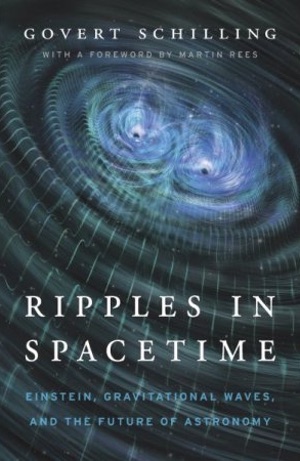Review: Ripples in Spacetimeby Jeff Foust
|
| “Fine, another black hole coalescence. We were getting tired of those. We wanted something new. We couldn’t believe we were saying that, but we were.” |
While gravitational waves may have emerged from general relativity, Einstein himself was unsure if they existed. He initially thought they did not exist, then changed his mind when he considered a different mathematical construct for them. Yet, two decades later, he vacillated again: he wrote a paper with another physicist arguing they did not exist, only to change his mind after the paper was initially rejected for publication when others pointed out an error in calculations. Gravitational waves, he concluded, can’t be proved not to exist, but he wasn’t sure they existed, either.
The search for gravitational waves didn’t begin until the 1960s, and was initially mired in controversy: physicist Joseph Weber claimed that his “Weber bars” were able to detect a large number of gravitational waves, but other physicists found nothing: a debate that, Schilling recounts, nearly led to a fistfight at one conference. Others turned their attention to alternative techniques, including one decades-long effort that resulted in LIGO. Elsewhere, he discusses the reported discovery of primordial gravitational waves in the cosmic microwave background by the BICEP2 project in 2014, which was later found to be inconclusive due to incorrect calculations on the effects of dust.
The book is not the first to examine the discovery of gravitational waves by LIGO, but Schilling does a good job putting the science of the discovery in perspective, writing for a reader that may have a little familiarity with the science but not a strong background with it. The result is a narrative that can be a little meandering: before discussing the first indirect detection of gravitational waves, involving pulsars, he includes a chapter discussing the lives of stars. If you’re familiar with the subject, that material can seem a little redundant, but it ensures no reader is left behind.
The end of the book makes it clear that the studies of gravitational waves is just beginning. One of the latest buzzwords in the field is “multi-messenger astronomy,” combining gravitational wave studies with more conventional observations across the electromagnetic spectrum to gain a deeper understanding of the universe. As González noted in her talk, the LIGO project soon detected gravitational waves from a source other than black holes coming together: in this case, a collision of neutron stars. It’ll keep astronomers from getting bored.
